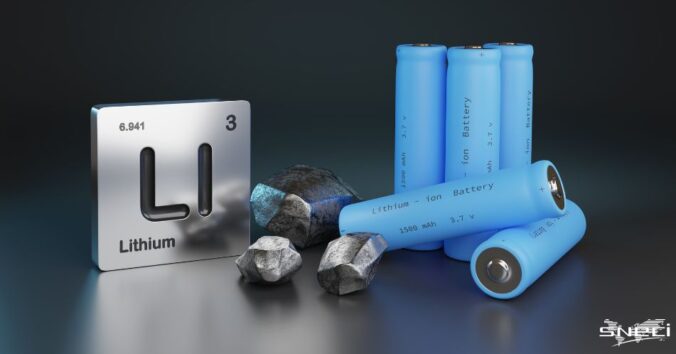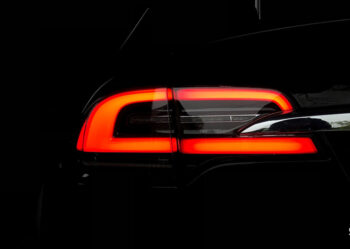Lithium shortage threatens to derail German electric vehicle boom

Global climate targets and the end of thermal power are driving global demand for lithium. This could become a major problem, especially for the automotive industry in Europe.
Germany has resolutely planned a special electromobility boom. In order to achieve its political climate targets, it plans to put around 15 million electric cars on German roads by 2030. An ambitious project for which lithium resources are indispensable if it is to succeed. And this is where the difficulties begin, which we will see together.
First of all, basic principle, what is lithium, where is it found and what is it used for?
What is lithium & where is it found?
Lithium is the third smallest atom in Mendeleev’s table and the smallest that can be found in a solid state at atmospheric pressure (hydrogen and helium, even lighter, are gases).
It is a soft metal that oxidizes very quickly in contact with water and air, which implies that it is only found in the form of salts in nature (brines or solid ores). Lithium is the chemical element with atomic number 3, symbol Li. It is an alkali metal, located in the first group of the periodic table of elements. Very reactive, lithium does not exist in its native state in the natural environment, but only in the form of ionic compounds.
The total world resource identified by the USGS (United States Geological Survey) is 53.8 million tons, 58% of which is in Bolivia and 27% in China.
It should be noted that to date the largest extractors are the United States, Australia, Chile, Argentina and China and the largest producers are Australia and the ABC triangle – Argentina, Bolivia, Chile.
China and Europe have immense lithium resources, in Ukraine in particular in Donetsk with a deposit of several million tons. An Australian company, European Lithium, has acquired it for European needs in the medium and long term.
The Russian invasion potentially poses a problem for European supplies, even if Western Europe has other reserves.
Why is lithium used in EV batteries?
The switch in battery technology to lithium was prompted by a European directive designed to protect citizens from the harmful effects of heavy metals on health. Cadmium, which was widely used in the early 2000s – the famous CadNi (or NiCad) batteries – has been banned from consumer applications.
Developed in the 1990s, lithium-based batteries quickly became more widely available and have almost completely replaced Cadni batteries, with clear ecological advantages over lead or cadmium batteries.
Today, lithium-based batteries have become an essential element for the batteries of telephones, electric cars, electronic devices etc.
4 main advantages:
- A much higher useful capacity and life span: Unlike lead-acid batteries, lithium-based batteries can be discharged almost completely (from 90% to 100%) without degrading
- Energy efficiency: Lead-acid batteries are less efficient at storing energy than Lithium-based batteries. Lithium-based batteries have a charge efficiency close to 100%, whereas lead-acid batteries have a charge efficiency of around 80%.
- Climatic resistance: We can see that at -20°C, a Lithium-based battery delivering a current of 1C (once its real capacity) can deliver more than 80% of its energy, while the AGM battery can only deliver 30% of its capacity. For severe environments (hot and cold), lithium-based batteries are the technological choice.
- Weight, dimensions and energy density: Lithium-based batteries take up 1.8 times less space, are 3 times lighter, have a constant capacity at all levels and last about 10 times longer than lead-acid batteries.
Electric cars: the demand for lithium continues to grow
Putting 15 million electric vehicles on the road by 2030 is a real challenge considering the shortage of semiconductors, the increase in materials and logistics, and the ever-increasing demand for lithium.
Indeed, there will not be enough lithium available to reach these objectives and this is at least what the Federal Institute for Geosciences and Natural Resources (BGR), shows in its latest available calculations.
Indeed, lithium has now become the most important raw material for the construction of batteries for electric cars but also extremely popular in the rest of the world for telecommunications, computers, smartphones, cyber security …
“Even if all the projects currently planned and under construction are implemented on schedule and we assume an average growth in demand, we will not have enough lithium to cover the global demand in 2030,” explains Michael Schmidt author of the BGR study in an interview with Handelsblatt.
To better understand this, let’s look at the figures. First of all, in 2020, 82,000 tons of lithium were produced worldwide, but the experts explain that over the next 8 years, demand will increase to at least 316,000 or more than 550,000 tons per year, depending on the scenario, and that 90% of the raw material processed is then transformed into lithium-ion batteries for electric cars.
According to BGR experts, in the worst case scenario there will be a shortage of 300,000 tons of lithium per year in 2030 and in the best case scenario a shortage of 90,000 tons, i.e. as much as is currently produced per year.
With the European Commission’s ban on the production of internal combustion engine vehicles by 2035, demand is expected to grow even faster than expected in the coming years.
And the constant is not just from Germany, the APC “Advanced Propulsion Center”; scientific advisory body to the British government and the domestic automotive industry; explains that by 2030, the projected 40 million electric cars will not be produced worldwide, but only 25 million due to the lithium shortage. There is simply not enough lithium, even though it is not a geologically scarce resource.
Again and again, delays in delivery
Remember that to date, the largest extractors are the United States, Australia, Chile, Argentina and China and there are reserves of lithium of more than 21 million tons worldwide.
As you can see, a large part of the deposits are in Chile, but also in Australia. There are still delays, long approval procedures and blockages in the planned projects. Each country has different conditions, legal frameworks and sometimes even complicated ones.
For example, in Mexico, the lithium industry has just been nationalized. In Chile, too, there are considerations to nationalize the production of lithium in whole or in part, and in principle there is simply too little investment. According to BGR, investments of between 30 and 50 billion euros will be needed by 2030 alone.
This already has an impact on the price of lithium. It is the principle of supply and demand, over the last 24 months, the price of lithium has soared unprecedentedly, doubling since the beginning of the year alone. Compared to January 2021, the price of lithium carbonate is seven times higher. In fact, Fastmarkets; London-based metal product suppliers; recently determined that battery-grade lithium carbonate prices for the Chinese market were between $71,000 and $75,000 per ton. The Asian benchmark price is just below the record level of about $78,000 per ton.
Lithium prices not about to stop rising
Chile is considering nationalizing one of the world’s largest producers, SQM.
The company “Sociedad Química y Minera de Chile” (SQM) is one of the three largest producers in the world, with about 27% of the world’s known lithium reserves located in the Atacama Desert where SQM produces Chile accounts for 1/3 of the necessary resources.
However, the Chilean Congress would like to declare SQM’s lithium mining a national interest and is trying to pass a law to that effect, which would result in the immediate expropriation of SQM. It is therefore quite possible that the world’s largest lithium producer will soon be able to deliver less and less despite the boom in demand.
In short, the situation is likely to become complicated if sources of rapid investment are not found and alternatives to lithium are not offered. Germany, which is aiming for 15 million electric vehicles by 2030, will have to rethink the sourcing of its suppliers and raw materials in order to achieve this ambitious goal. This is without counting on the energy crisis which will push factories to slow down for obvious energy cost reasons.
SNECI and the operational support of manufacturers
SNECI helps manufacturers achieve operational excellence through the improvement and/or redesign of their industrial, service and administrative operations and processes.
Our various solutions in business development and industrial performance at the international level allow us to support suppliers and manufacturers in different fields of expertise:
- In industrial performance, we provide our clients with the means to achieve operational excellence, by accompanying them in their industrial projects or by training and coaching their teams. We also have in-depth expertise in assessing industrial companies and implementing best practices in quality, purchasing and logistics.
- In business development, our team partners with suppliers who are expanding into new regions or seeking to acquire new customers by acting as an extension of their sales, project, quality and logistics teams. We also advise companies on their partnership and acquisition strategy.
If you would like our team of over 70 years of experience in the automotive industry, with 450 experts worldwide, please contact Laura by email at laura@sneci.com or directly via the contact tab on our website.





